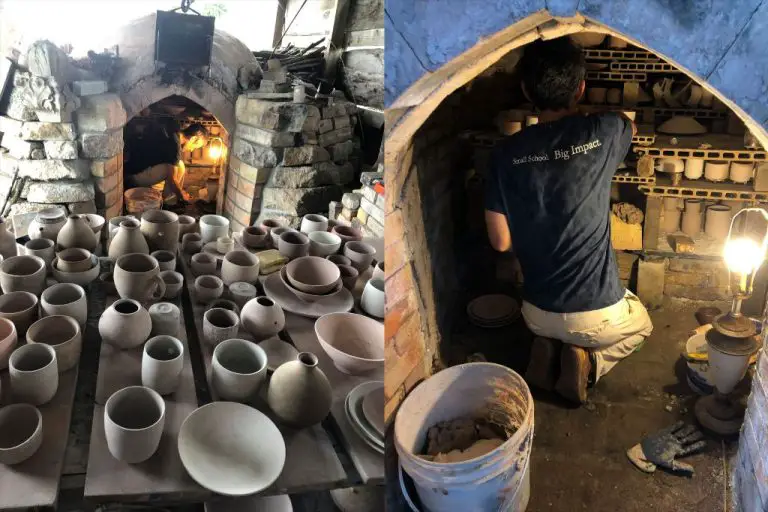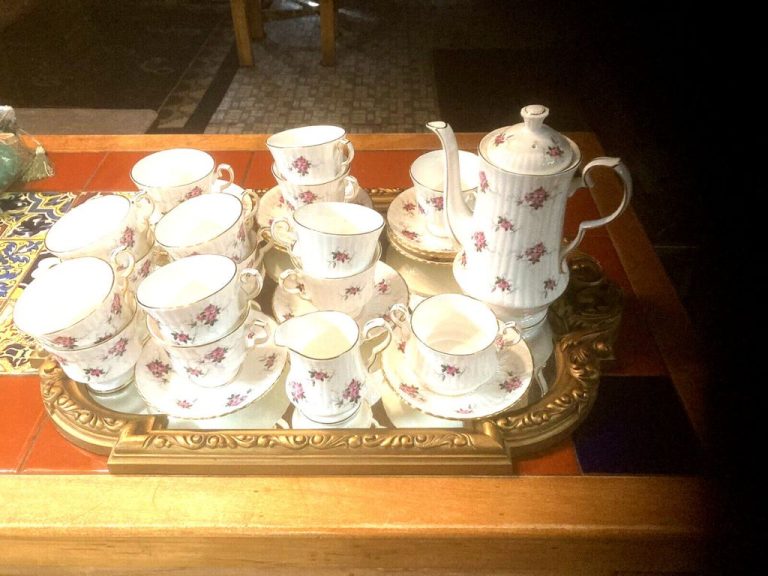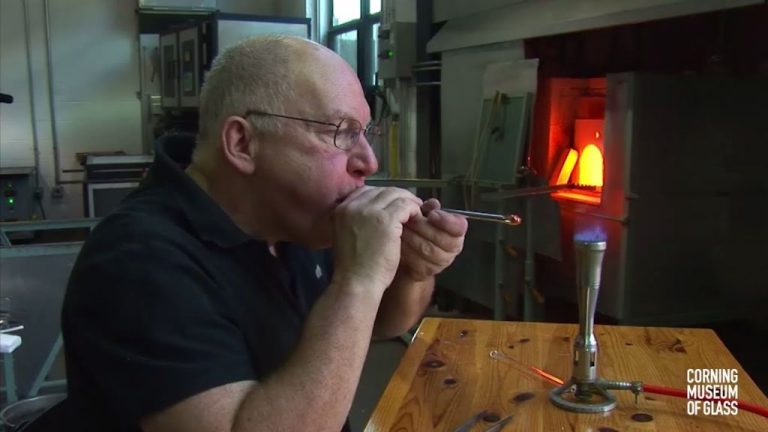How Do Clay Oil Lamps Work?
Oil lamps have been used for thousands of years to provide artificial lighting. Some of the earliest oil lamps date back over 10,000 years and were made of shells or hollowed out rocks. Throughout history, oil lamps spread around the world and became one of the main sources of lighting before the advent of electricity.
The basic mechanics behind oil lamps are quite simple. The lamp consists of a fuel reservoir filled with oil or other flammable liquid fuels. One end of a wick is submerged in the oil reservoir, while the other end extends above the reservoir. The exposed end of the wick is then lit, and the flame heats and vaporizes the fuel which travels up the wick through capillary action. The vaporized fuel combusts with oxygen in the air, creating a controlled flame that produces light. Adjusting the wick length controls the size of the flame and brightness of the light. Oil lamps provide a portable and renewable lighting source, albeit less convenient and with more emissions than electric lighting.
Materials
The clay used to make an oil lamp provides the container and shape for the lamp. Clay is an excellent material because it can be molded into various shapes and sizes to make lamps. The consistency of clay allows it to be shaped by hand or with simple tools. Clay can also withstand the heat of a flame without cracking.
The most common types of oils used as fuel in clay lamps are olive oil, vegetable oils, and animal fat oils. Olive oil was frequently used in ancient Greek and Roman oil lamps. Vegetable oils like seed and nut oils can also be used. Animal fats like fish oils, lard, and tallow provide an economical fuel source. The viscosity of the oil determines how well it climbs up the wick and how bright the flame will burn. Thinner oils like olive oil tend to burn brighter.
Parts of an Oil Lamp
Clay oil lamps consist of four main parts that enable them to produce light:
Reservoir
The reservoir, or body of the lamp, holds the oil that fuels the flame. It is commonly shaped like a bowl or sauce pan, with a wide open top that allows fuel to be added. The reservoir is made of clay molded into shape while wet, then fired at high heat to harden.
Wick
The wick is a piece of flax, cotton, hemp or other natural fiber that sits partially submerged in the oil. The wick absorbs and transports a small amount of oil via capillary action up to the burning tip. This provides the fuel for the flame. Longer wicks tend to produce bigger flames.
Nozzle
The nozzle is a tapered opening or spout where the wick protrudes from the lamp. This helps shape and aim the flame in a certain direction for lighting. A pinching of the clay around the wick also helps regulate the burning.
Handle
A handle allows the lamp to be held aloft or hung from something. Handles are molded directly onto the body and some lamps have multiple handles.
How the Wick Works
The wick is a key component of an oil lamp that enables it to produce a flame. The wick is made of material that absorbs and holds liquid oil, such as cotton, linen, or fiberglass. The wick sits partially submerged in the oil reservoir of the lamp.
Through a phenomenon called capillary action, the wick draws oil up from the reservoir. Capillary action occurs due to the interactions between the liquid oil and the solid fibers of the wick. The attraction between the liquid and solid causes the oil to be pulled upwards along the fibers of the wick.
As the oil saturates the wick, it creates a continuous channel through which more oil can travel upwards. This creates a constant flow of oil moving up the wick as long as it remains partially submerged in the reservoir. The wick essentially acts like a pipeline, delivering fuel from the reservoir to the flame.
The exposed end of the oil-saturated wick is lit to produce the flame. As the wick burns, it draws more oil up to sustain the flame. This capillary action process repeats continuously as long as oil remains in the reservoir and the wick is lit.
Combustion Process
The combustion process in a clay oil lamp allows the lamp to produce a continuous flame. Here’s how it works:
The wick in the lamp acts like a pipe, drawing the oil up from the reservoir due to capillary action. As the oil saturates the wick, it gets exposed to air at the top of the wick.
The exposure to air causes the oil to vaporize and turn into a gas. This vaporized oil then mixes with oxygen in the surrounding air. When a flame is introduced, the vaporized oil combusts with the oxygen to produce an ongoing flame.
The capillary action continues to draw more oil up the wick to keep this combustion process going. This results in a sustained, consistent flame from the oil lamp.
Adjusting the Flame
The size and brightness of the flame can be adjusted by raising or lowering the wick.
Exposing more of the wick above the fuel reservoir increases the surface area of the wick that can burn, creating a larger flame. Lowering the wick reduces the exposed area and makes the flame smaller.
Gently pinching the wick between two fingers and sliding up or down allows you to precisely control the height of the exposed wick. Move slowly to find the desired flame brightness for your needs.
A bright flame is useful for maximizing light, while a lower flame is less likely to produce smoke or get dangerously large. Adjusting the wick gives flexibility to adapt the flame to your specific situation.
Maintenance
Clay oil lamps require some regular maintenance to keep them burning properly. Here are a few key maintenance tasks:
Trimming the wick: The wick should be trimmed occasionally to remove any charred or burnt portions. Use small scissors to carefully trim the wick about 1⁄4 inch above the holder. Trimming helps the wick stay tidy and promotes an even flame.
Cleaning soot deposits: Soot can build up on the outside of the nozzle as the oil lamp burns. Gently wipe away any soot deposits using a soft cloth. Avoid scrubbing too hard, as clay is delicate. Soot buildup left too long can hinder airflow.
Refilling oil: Check the oil reservoir regularly and top it off as needed. Use olive oil, vegetable oil, or other plant-based oils. Do not overfill the reservoir – leave a bit of room at the top. Refilling frequently prevents the wick from running dry.
Advantages
Clay oil lamps have several key advantages that made them a popular form of illumination for thousands of years. The most notable advantages are:
Simple Design
Clay oil lamps have a very simple design, usually consisting of a fuel reservoir, a wick, and a handle or base. This simple construction made them easy and inexpensive to produce in large quantities using basic materials like clay and string.
Low Cost
Due to their simple design and readily available materials, clay oil lamps were very inexpensive to make. This made them affordable and accessible forms of illumination even for lower income households.
Portable Illumination
The small size and self-contained design of most clay oil lamps made them highly portable. They could be easily carried around to provide light wherever needed, whether indoors or outdoors. This portability and accessibility was a key factor in their widespread use.
Disadvantages
Clay oil lamps have some drawbacks that need to be considered before use. The most notable is the fire hazard they can pose. Because oil lamps contain an open flame, extra precautions must be taken to prevent accidents. Setting an oil lamp on a flammable surface or too close to fabrics or paper creates a serious risk of starting a fire. Children and pets should also be monitored closely around burning oil lamps.
In addition, oil lamps provide very limited illumination compared to electric lighting. The light cast from an oil flame is quite dim and must be placed close to the task needing illumination. Larger areas are difficult to fully light with an oil lamp.
Finally, oil lamps produce smoke and soot, even when adjusted properly. This can dirty surfaces, fabrics, walls, and linens inside the home. Proper ventilation is essential, but some residue may still occur. The fumes released can also cause indoor air pollution in poorly ventilated spaces.
Modern Use
Although electric lighting has made oil lamps largely obsolete for everyday illumination, they still have some modern uses including:
Decorative lighting – Clay oil lamps can add a nostalgic, rustic ambiance to indoor and outdoor decor. Their soft, flickering light is warmer and more inviting than modern bulbs. Decorative oil lamps come in all shapes and sizes for tabletops, wall sconces, accent lighting, and more.
Emergency preparedness – In a power outage, an oil lamp can provide necessary light for tasks like cooking, reading, and getting around safely. Families and survivalists often keep oil lamps ready in case of blackouts or disasters. With a sufficient fuel supply, an oil lamp can burn for hours of backup lighting.
Nostalgia – The simplicity and handcrafted imperfection of clay oil lamps harken back to ancient times and traditional methods of lighting. Their familiar design elicits feelings of comfort, heritage, and connection to the past. Some enjoy oil lamps for their nostalgic glow during holidays, cultural celebrations, or cozy evenings.






